I owe you a 10-second car
January 20, 2025
by Rowland Jowett
Ever wondered how much power Brian would need to make his Supra a 10-second car? It takes supercar manufacturers vast effort to break this milestone with street tyres. The Ferrari SF90 Stradale model can be used as a benchmark with a carwow ¼ mile time of 9.6sec. This car employs front electric motors to increase traction. It is possible to adapt the vehicle model and use laptime simulation to evaluate the performance trades necessary to reach this quarter mile target with other car configurations.
Simplifications
In the name of entertainment, let’s make some simplifications. Weight distribution and aero balance have a major influence on straight line traction. Sweeping these parameters on a rear wheel drive to get the quickest ¼ mile time leads to a frankly ridiculous 14% weight and aero distribution. This is probably not a surprise since the load on the rear wheels needs to be maximised to gain traction, but with this balance, the car will likely understeer off at the first corner (or perhaps oversteer?!). In the interest of maintaining a modicum of circuit performance, weight distribution and aerobalance shall be fixed to 50:50. If you are interested in how these parameters influence circuit performance check out this article on weight distribution, aero balance and mechanical balance at the Nurburgring Nordschleife.
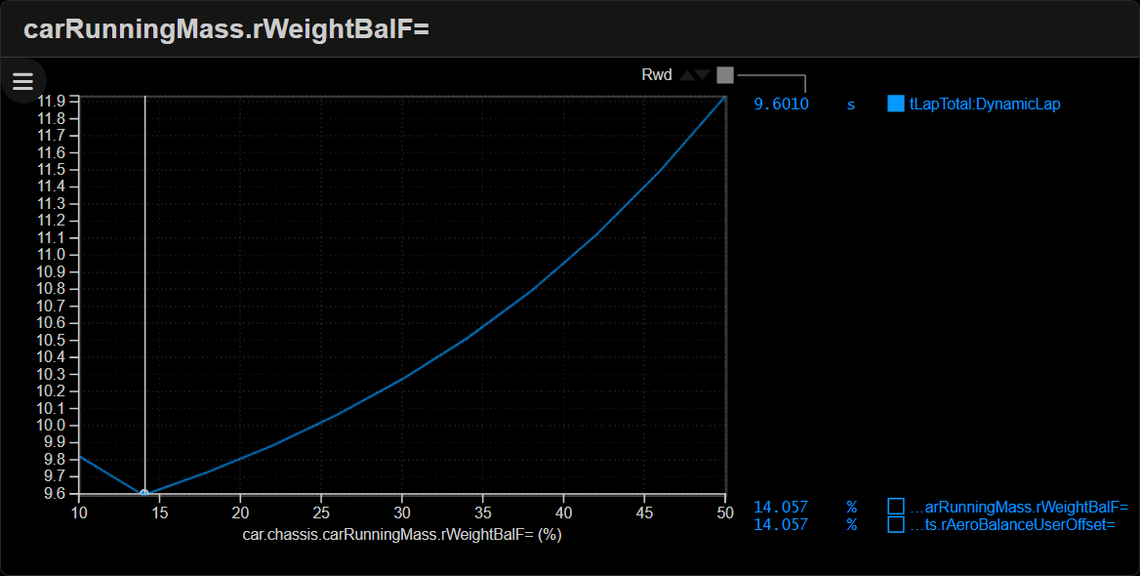
The rear wheel drive car in this chart has 1000bhp, and can achieve a ¼ mile time of 9.6sec by moving the weight nearly all the way rearwards with a ridiculously small 14% of the weight and aero on the front axle.
Tyre grip shall be kept constant and equal to that of the Ferrari SF90 Stradale. No racing slicks or bias-ply drag tyres.
No Racing Slicks Allowed
This is a street car, so in the absence of specialist tyres, unfortunately no amount of power is going to repay Brian’s debt of a 10-second car. Shaving a bit of weight from the Supra to 1500kg and increasing downforce to double that of the Ferrari doesn’t get close.
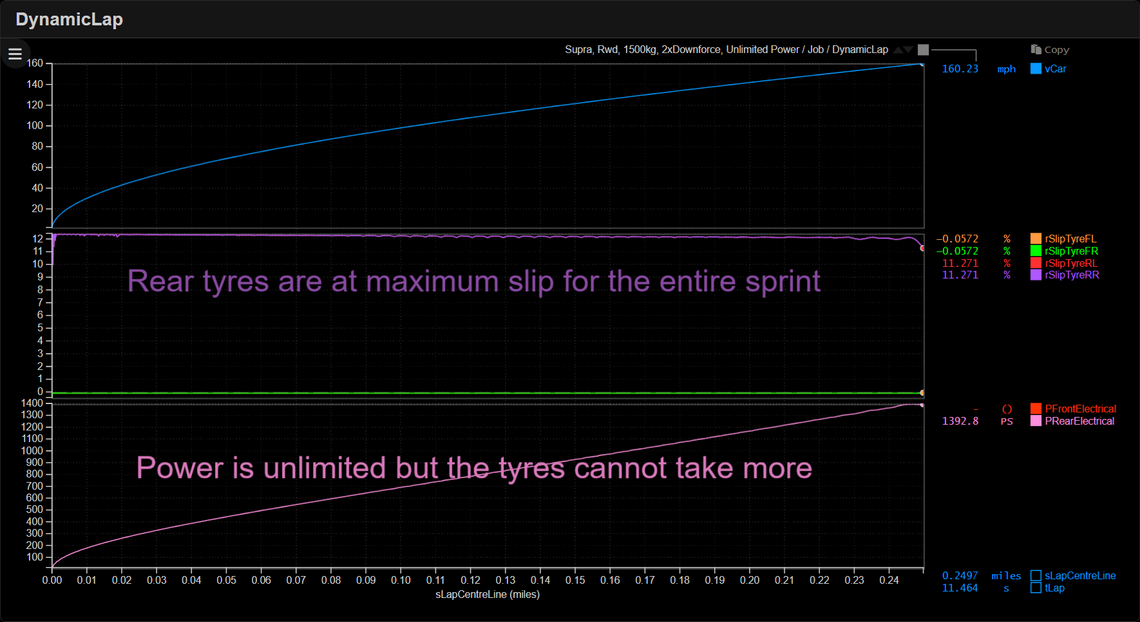
rSlipTyreR represents the over rotation of the rear tyres. The tyres are slipping to achieve peak grip for the entire ¼ mile sprint.
The problem is the wheels light up and the tyres are terrifyingly on the limit of grip for the entire race, while only achieving a time of 11.5sec. Even with the most advanced tyre slip traction control (letting Canopy simulations drive!) the car is not able to lay down more than 1400PS with stock tyres. The front engine layout doesn’t help either as it reduces the opportunity to move the weight rearwards. Sorry Brian, unlimited NOS won’t help you!
The enthusiast reader might point out that there are a few 10-second rear wheel drive cars, but with the assumptions that we’ve made here about tyre grip and weight distribution, this is challenging. Mid-engined super cars fair better thanks to their rearwards weight bias, and specialist muscle cars have more grip.
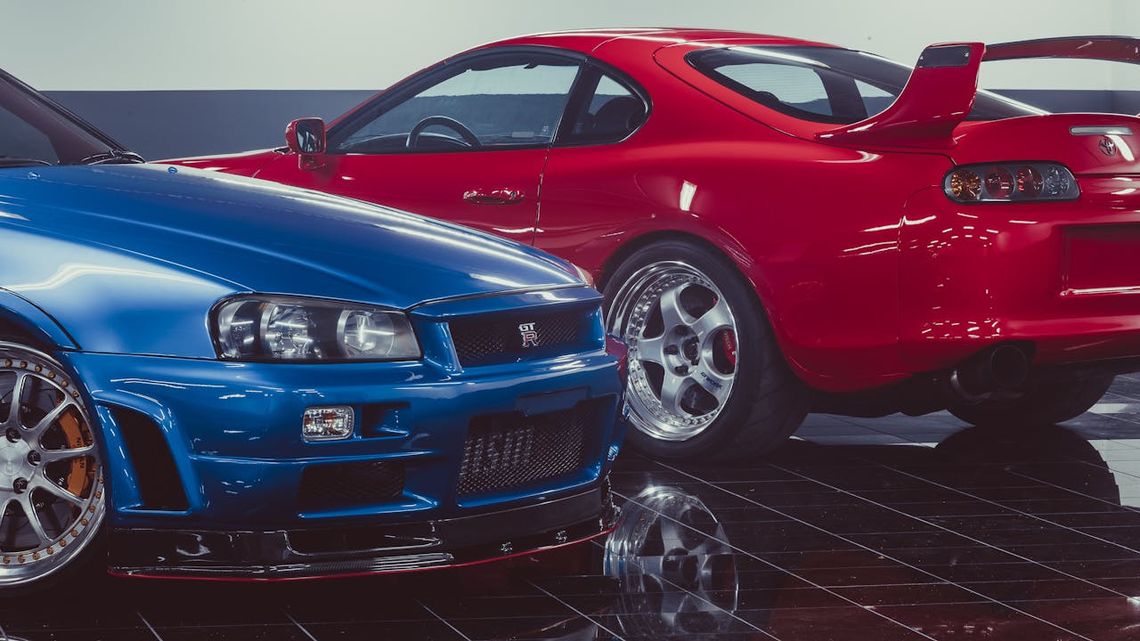
Perhaps consider changing car?
All Wheel Drive
Without resorting to special tyres or strange weight balance, all-wheel drive traction makes it much easier to hit the target. This is why so many ludicrous EVs lay down this time: it is easy to add in powerful lightweight front electric motors, plus with low motor inertia, controlling tyre slip and holding all four tyres at peak grip is a much easier task. Batteries that are sized for range are large enough to deliver enormous instantaneous power.
Electric cars can be designed with infinite freedom to determine the split of power between the front and rear axle. Incidentally the ¼ miles time of the SF90 would improve from 9.6 to 9.1 sec if the car had the ability to split its 1000PS more evenly between the axles: 58% of the power on the rear seems to be the ticket.
Vehicle Mass
For anyone who bemoans the bloating of cars over time here is all the ammunition you need. If someone were to make a 1000kg all-wheel drive, firstly please sign me up to the waiting list. This car would only need a modest 386PS, around a third of the Ferrari SF90, to provide at least as many thrills. It is surprising how little power is required if weight is kept down.
Below is a table of the power required (PS) to achieve a 10 second ¼ mile with various combinations of vehicle mass and downforce.
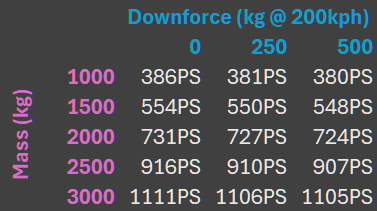
250kg of downforce represents the Ferrari SF90 Stradale, while 500kg exceeds that of the McLaren P1 (363kg) and Porsche 911 GT3 RS (409kg).
From the table, power requirements scale roughly linearly with car mass, such that a 2-tonne car requires 731PS. This simulation reasonably predicts that the Tesla Model S Plaid performance (1034PS, 2250kg, AWD) has more than enough power propelling it to a time of 9.6 seconds.
Aero
On average, only 99PS of power is going into drag, and the important part is the start of the drag race where speed is lower and drag is insignificant. Most of the engine power is accelerating the car mass, so it makes sense that the power requirement is linear with mass: F = ma, thanks Newton!
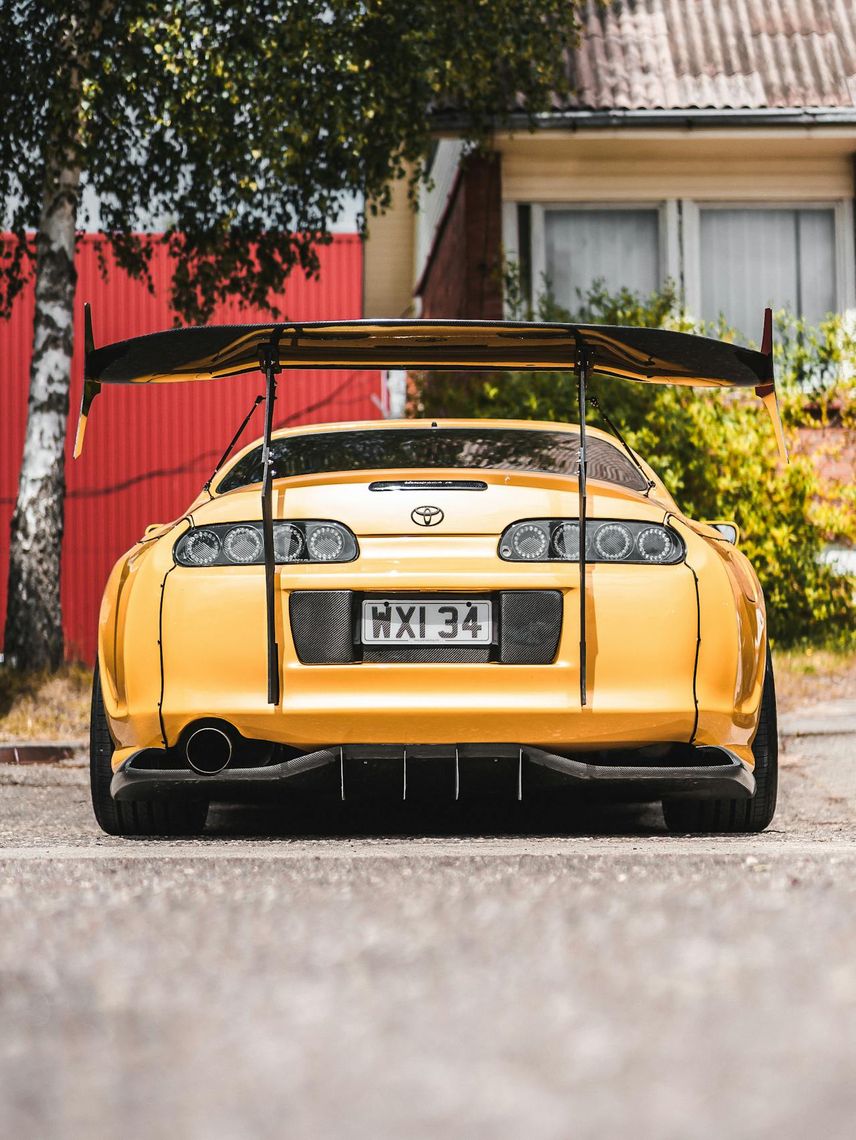
Not necessary!
Spoiler Alert
The surprising feature is that huge spoilers hardly affect the ¼ mile time. Even exceeding the ridiculous downforce levels provided by the McLaren P1 or Porsche 911 GT3 RS, adding downforce is only equivalent to 7PS versus no downforce at all. Secondary laptime sensitivities can help us to understand why.
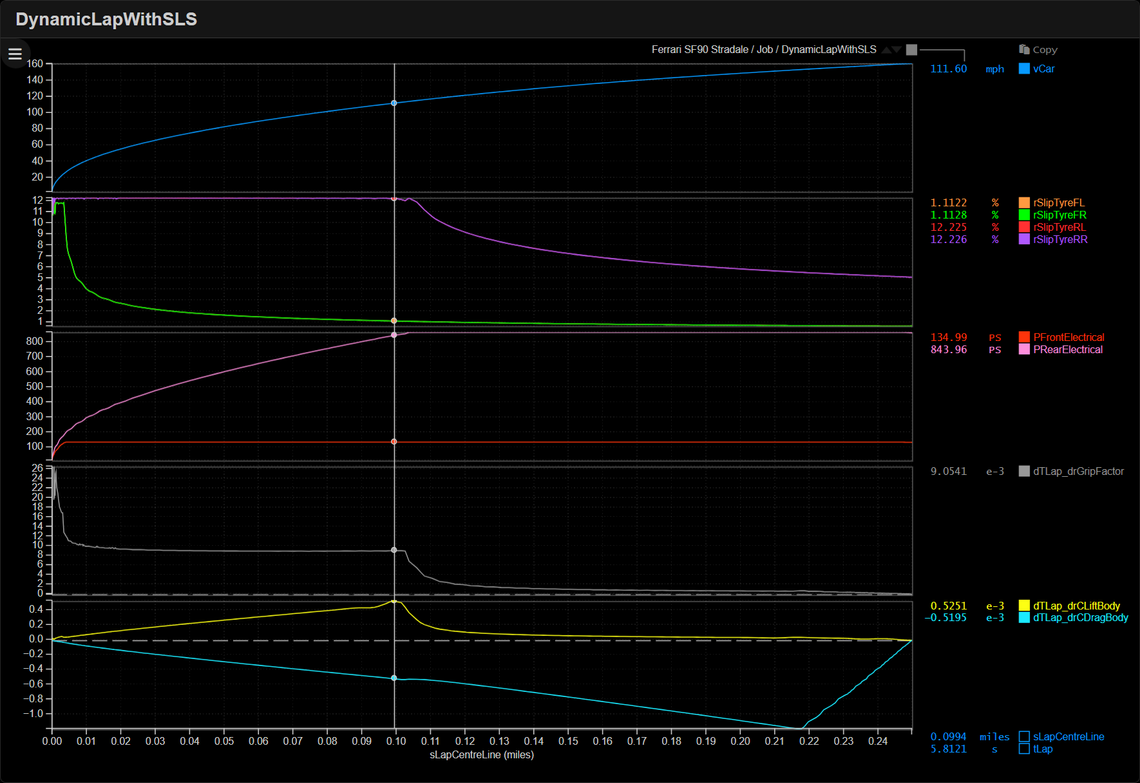
¼ mile sprint for Ferrari SF90 Stradale
Off the line, grip eclipses everything. The graph above shows the channel dTLap/drGripFactor in grey: how much the ¼ mile time would improve in milliseconds if we doubled grip at each meter along the track. Grip is most in demand when both the front and rear tyres are spinning, then drops a little when front tyres hook up but the rears are still on the limit. At 112mph the car no longer has enough power to light up the rears and the sensitivity drops because the car is limited by the engine.
The sensitivity to downforce, dTLap/drCLiftBody in cyan, starts at zero because aero has no effect on a stationary car. It builds with car speed as the aerodynamics come into play, then once the car is no longer traction limited, the benefit of downforce fades away again.
The sensitivity to drag, dTLap/drCDragBody in yellow, is more significant than downforce. It continues to build progressively up to 150mph. After this point the car is so close to the finish line the sensitivity drops to zero; extra speed is of no use after the chequered flag.
By integrating these sensitivities over the run, grip turns out to be 49 times more important than downforce for this car, and 17 times more important than drag.
SUMMARY
The winning formula is as follows:
The power required to accelerate the car scales roughly linearly with mass.
Once there is enough power, an effective method is needed to deliver the power. Grip is king, all-wheel drive is best, but with rear wheel drive shifting the weight rearwards helps the tyres to hook up.
Even with the impressive levels of downforce achieved by supercars, it is of little benefit during the ¼ mile sprint.
After a modest power upgrade, Brian really needs to go tyre shopping! Resist the temptation to buy that enormous spoiler along the way.